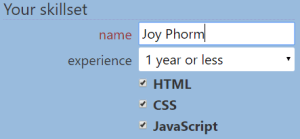Quick Tip: How to Install Node.js on Debian

Key Takeaways
- The guide provides three methods to install Node.js and npm on a Debian system: using the default Debian repositories, the NodeSource repository, and the Node Version Manager (NVM). Each method has step-by-step instructions, including verification of successful installation.
- The guide also outlines how to uninstall Node.js and npm from your Debian system, with specific instructions depending on whether they were installed from the default Debian repositories or with NVM.
- The Node Version Manager (NVM) is particularly useful for developers who need to manage multiple Node.js versions and switch between them easily. The guide provides instructions on how to install different Node.js versions using NVM and how to switch between installed versions.
Are you looking to harness the power of Node.js for building scalable network applications on your Debian system? Look no further! In this comprehensive guide, we’ll take you through the process of how to install Node on Debian, ensuring you have the right tools at your fingertips. Plus, we’ll cover how to uninstall Node.js and npm, should you ever need to. Let’s dive in!
Installing Node.js and npm from the Default Debian Repositories
Debian’s repository serves as an excellent starting point for those seeking a stable version of Node.js. By using the official repositories, this approach guarantees a dependable installation, freeing you to concentrate on your project without compatibility concerns.
We’ll outline the steps to install Node.js and npm using Debian’s default package manager.
Update Package List
Updating your package list to access the most recent version in the repository is a necessary step before installing Node.js. To do this, run the following command: sudo apt update. This command refreshes the package list and downloads information about the latest available packages, including the default Node.js version, and guarantees access to the latest version from the repository.
Install Node.js and npm
With your package list updated, you can proceed to install Node.js and npm. To achieve this, execute the command sudo apt install nodejs. This installs Node.js and its dependencies. Once the installation is complete, you’ll have installed Node on your system.
Once you’ve installed Node.js, npm (the Node.js package manager) should be installed next. npm facilitates the installation of modules and packages to be used with Node.js, especially when working with multiple versions. To install npm, simply run the command sudo apt install npm.
Verify Installation
After you’ve successfully installed Node, verify your successful installation by checking the installed versions of Node.js and npm. Run the commands node -v and npm -v in your terminal. The displayed versions confirm that Node.js and npm are installed and ready for use on your Debian system.
Installing Node.js and npm from the NodeSource Repository
The NodeSource repository is a preferable choice for developers who desire more up-to-date versions and improved compatibility. This repository offers a multiple node system with various Node.js versions, allowing you to access up-to-date releases and features.
We’ll guide you through the process of how to install Node.js and npm from the NodeSource repository, ensuring a smooth Node.j installation experience.
Add NodeSource Repository
First, you need to add the NodeSource repository to your Debian system. To do this, follow the instructions provided in the NodeSource GitHub repository. This adds the repository to your system, allowing you to access different Node.js versions.
Install Node.js and npm
With the NodeSource repository added, you can now install Node.js and npm. Utilize the apt command to install Node.js and npm from the NodeSource repository by running sudo apt install nodejs. This method ensures that you have access to more recent versions than those available in the default Debian repositories.
After Node.js and npm are installed from the NodeSource repository, validating your installation is crucial. This ensures that you have the desired versions and can proceed with confidence in your development journey.
Verify Installation
To verify the installation of Node.js and npm from the NodeSource repository, run the commands node -v and npm -v in your terminal. These commands display the installed versions, confirming that Node.js and npm are ready for use on your Debian system.
Installing Node.js and npm with Node Version Manager
For developers who need to manage multiple node versions and switch between them easily, the Node Version Manager (NVM) is the ideal solution. NVM allows you to install different JS versions, including the desired JS version, and set a default version, providing flexibility in your development process.
Here are the steps for installing Node.js and npm using NVM.
Install NVM on Debian
To install NVM on Debian, follow these steps:
- Go to the NVM GitHub repository and download the installation script.
- Open your terminal and navigate to the directory where the script is located.
- Run the script to install NVM on your system.
- Once the installation is complete, restart your terminal.
- To activate NVM, run the command:
nvm use [version](replace[version]with the desired Node.js version).
With NVM installed, you can now use it to manage various versions of Node.js. NVM provides a simple way to install and switch between different Node.js versions, ensuring you have the right tools for your specific project needs
Install Node.js Versions Using NVM
You can install different Node.js versions using NVM by executing the command nvm install [version number]. This command installs the desired Node.js version on your system, allowing you to work with multiple versions without compatibility issues.
Following the installation of your preferred Node.js version, type nvm ls to view the various versions you have installed. This command lists all installed Node.js versions, providing an overview of the available versions on your system.
Switch Between Active Node.js Versions
Using NVM, you can easily switch between installed Node.js versions and set a default version. To switch to an installed version, use the command nvm use [version number]. To set a default version, run the command nvm alias default [version number].
This guarantees a seamless development experience by activating the specified version every time you open your terminal.
For a fuller description of how to use NVM, check out our NVM tutorial.
Uninstalling Node.js and npm
There may come a time when you need to uninstall Node.js and npm from your Debian system. Whether you’re cleaning up your environment or troubleshooting an issue, we’ve got you covered.
We’ll discuss the methods for uninstalling Node.js and npm based on the method of installation in this section.
Uninstall Node.js and npm When Installed from the Debian Repositories
If you installed Node.js and npm from the default Debian repositories, use the apt command to uninstall the. To uninstall Node, execute the command sudo apt remove nodejs in your terminal. This removes Node.js and its associated packages from your system.
To verify the uninstallation, run the commands node -v and npm -v. If the versions are not displayed, it confirms that Node.js and npm have been successfully uninstalled.
Uninstall Node.js and npm When Installed with NVM
Use the relevant NVM commands to uninstall Node.js and npm if they were installed with NVM. Run the command nvm uninstall [version number] to uninstall a specific version of Node.js. This ensures that only the desired version is removed. For example, nvm uninstall v6.6.0 will uninstall Node.js version 6.6.0.
Summary
In this guide, we’ve covered different methods for installing Node.js and npm on your Debian system, including using the default Debian repositories, the NodeSource repository, and the Node Version Manager (NVM). We also provided instructions for uninstalling Node.js and npm based on the installation method used. Now you have the knowledge and tools to harness the power of Node.js for your projects, ensuring a seamless development experience. Happy coding!
Dianne is SitePoint's newsletter editor. She especiallly loves learning about JavaScript, CSS and frontend technologies.
Published in
·Accessibility·Audio & Video·Design·HTML·HTML & CSS·Patterns & Practices·Photography & Imagery·UX·August 15, 2014



